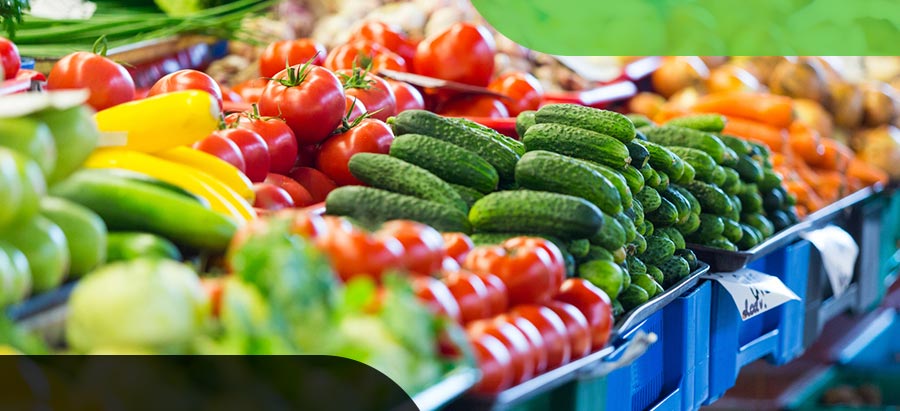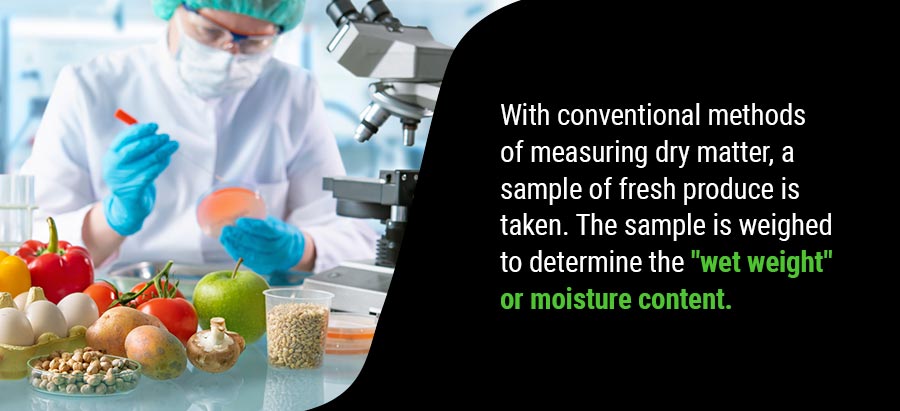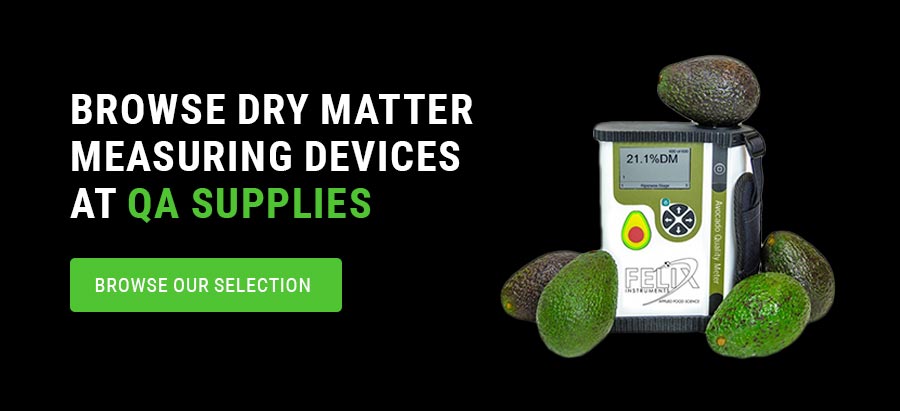The Complete Guide to Dry Matter in Fresh Produce
Oct 18th 2022

When selling produce, it's crucial to ensure you provide customers with the highest quality fruits and vegetables. You can sometimes assess quality simply by examining the product, but in most cases, you'll want something a little more foolproof.
Measuring dry matter in produce is an effective way to determine quality, maturity and optimal harvesting time, thus reducing spoilage and allowing you to provide better products. How exactly do you go about doing this? This article explores some different ways to measure dry matter in fresh produce.
What Is Dry Matter?
Dry matter in produce refers to the material that remains after water loss in a fruit, stem, leaf or roots. Conversely, the moisture content reflects the amount of water present in the produce being tested.
Dry matter in fruits or vegetables results from the accumulation of:
- Starches
- Carbohydrates
- Oils
- Sugars
- Antioxidants
- Proteins
- Vitamins
- Minerals
- Fiber
- Lipids
- Volatile compounds
The Importance of Measuring Dry Matter Content
Dry matter essentially measures produce quality and maturity. Dry matter changes throughout the stages of fruit development, which can indicate maturity in climacteric fruits that store sugars as oil content or starch — like mangos, pears, apples and bananas — and non-climacteric fruits that store sugars in their soluble forms — like melons, peaches, grapes and citrus fruits. Aside from genotype, dry matter accumulated in produce also depends on field conditions where plants are grown and the cultivation methods used.
How Dry Matter Varies in Fruits and Vegetables
Now, let's explore some examples of how dry matter content can vary by produce type:
- Avocado: Unlike other produce types, dry matter doesn't necessarily indicate maturity in avocados. Its oil content correlates with the maturing process, increasing as the avocado matures. Avocados are usually declared mature at 11.2% oil content.
- Bell pepper: Typically, bell peppers are at their best quality when harvested at maximum dry matter. During this stage, there's less ascorbic acid that hardens the vegetable. Ascorbic acid continues decreasing post-harvest. Bell peppers harvested at maximum dry matter content — 7.35% — tend to have the longest storage time.
- Cabbage: The first dry matter peak of 8.6% is usually the best time to harvest cabbage. If harvested later, they can lose weight from water decrease through cracking of leaves and perspiration.
- Tomato: Dry matter content increases in tomatoes as they ripen, primarily due to water loss through transpiration. The highest dry matter content is usually found in fully ripe tomatoes. The maximum dry content at which the tomato should be harvested mainly depends on the variety, but it can vary from 5%-8% of fresh fruit weight.
How to Measure Dry Matter Content
There are multiple ways of measuring dry matter to determine if the produce has reached ample maturity for harvesting. The two main techniques are conventional, manual methods and modern technology-based methods.

1. Conventional Methods
With conventional methods of measuring dry matter, a sample of fresh produce is taken. The sample is weighed to determine the "wet weight" or moisture content. The produce is then dried in a dehydrator, oven or microwave until the moisture has fully evaporated.
Next, the sample is weighed again to measure the dry weight. The following equation is then used to calculate the dry matter content:
- (Dry weight / wet weight) x 100 = percentage of dry matter
Dry matter measures the ratio of fresh weight — the weight of the fruit before the drying process takes place — to dry weight. As you can likely imagine, the main drawback to this method is that it's highly labor-intensive and time-consuming. Additionally, it destroys the produce in the process.
2. New Methods
Alternatively, new handheld sensory instruments simplify this process, using near-infrared (NIR) spectroscopy to detect dry matter. These non-destructive tools can accurately estimate dry matter levels without affecting the fruit or vegetable being tested.
Results and measurements can be acquired instantly in packing warehouses, orchards and fields. Furthermore, the devices allow you to conveniently organize thousands of readings. Let's look at some of these devices below.
F-751 Mango Quality Meter
Using state-of-the-art NIR technology, the F-751 Mango Quality Meter by Felix Instruments non-destructively and precisely measures dry matter and total soluble solids (TSS) or Brix, the key ripeness and quality indicators in mangos. This device allows growers to predict crop harvest dates, thus reducing guesswork and minimizing spoilage.
You can seamlessly transfer the data obtained from the F-751 Mango Quality Meter to a computer or upload this data to the Fruitmaps® cloud. This crop mapping software enables mango growers to predict harvest timing more accurately than ever and monitor their farms in real time from any location.
F-751 Avocado Quality Meter
When packers and growers rely solely on food dehydrators or microwave ovens to assess dry matter in avocados, the process is incredibly labor-intensive and time-consuming. Additionally, when repeating this process throughout the growing season, large quantities of valuable avocados are destroyed over time.
The F-751 Avocado Quality Meter from Felix Instruments completely transforms this process. Using non-destructive NIR light, the machine can accurately measure avocado dry matter in seconds, saving time without wasting quality fruit.
Considering the increasing popularity and price of avocados, an NIR-based quality meter can be an asset for packers, farmers and suppliers alike.
F-750 Produce Quality Meter
The F-750 Produce Quality Meter by Felix Instruments can be used for various produce species. It uses NIR spectroscopy to estimate dry matter, color, titratable acidity and TSS. Its precise readings can also be used for scientific studies on fruit maturity and quality.
Operating like a high-powered flashlight, the machine releases light particles into a produce sample, measuring the NIR light interference with molecular components inside the sample. From providing an objective analysis for produce quality to determining optimal harvest times, the F-750 has various applications.
For many years, the F-750 has been used for non-destructive and rapid measurements of dry matter, soluble solids concentration (SSC) and external and internal color within seconds, optimizing earnings and reducing food loss.
This compact, versatile device makes it easy for retailers, suppliers and farmers to operate inside a lab or out in the orchard. Its convenient, intuitive user interface and customizable model-building software allow for seamless use.
Browse Dry Matter Measuring Devices at QA Supplies
Having the right equipment is essential when measuring dry matter in vegetables and fruits. At QA Supplies, our dry matter testers use advanced technology to improve outcomes at your facility or farm, helping you sell better products to your customers. Browse our selection of dry matter meters today!


